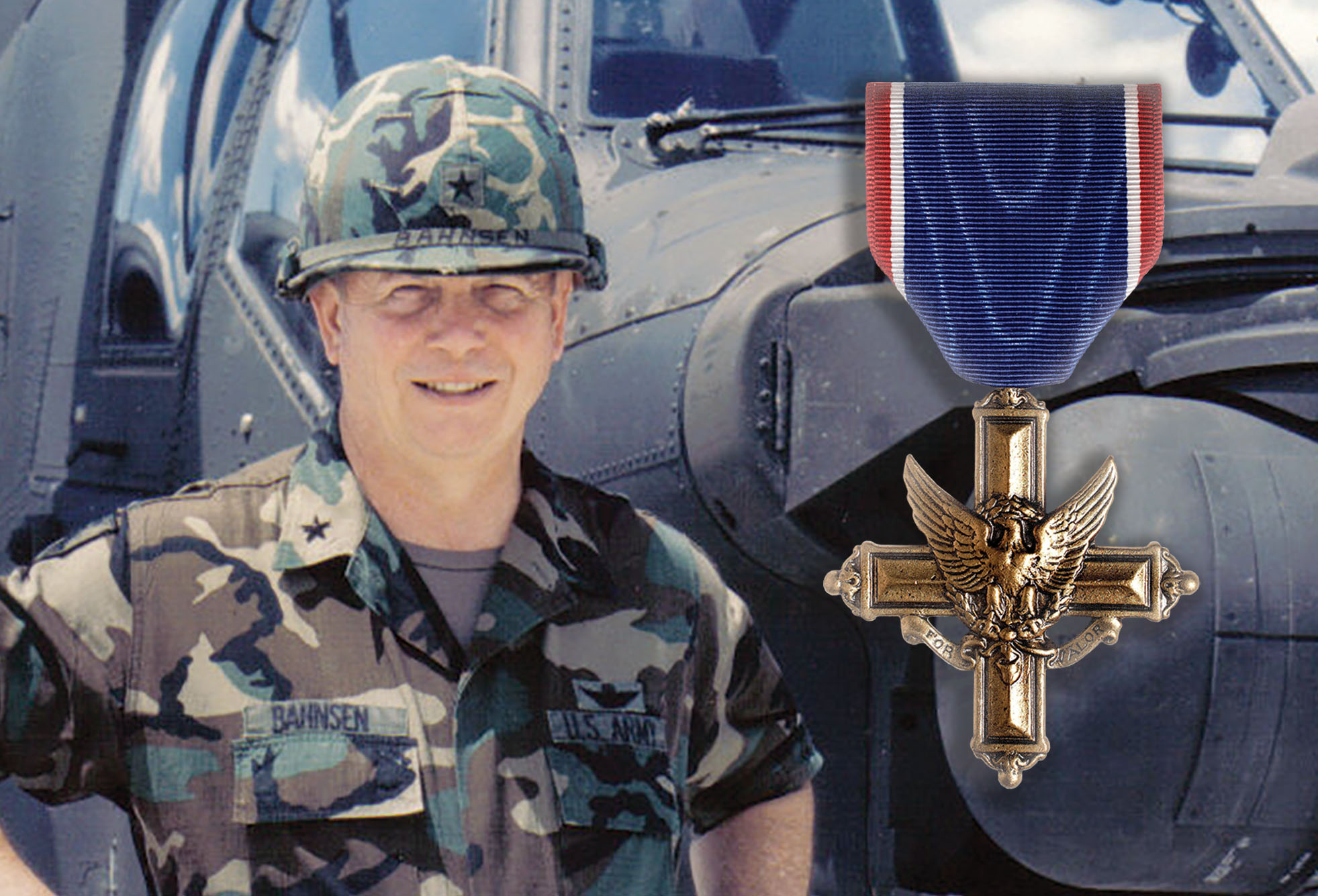John Charles Bahnsen, born in Albany, Georgia, on Nov. 8, 1934, early on acquired the nickname “Doc,” after his grandfather Peter F. Bahnsen, who emigrated from Denmark with his family and in 1890 became Georgia’s first state veterinarian. That moniker followed Bahnsen to Vietnam where he used the skills of a helicopter pilot, rather than those of a physician, to save lives.
Bahnsen completed prep school at Marion Military Institute in Alabama and received an appointment to West Point. He graduated in 1956. Following fixed-wing flight school and aviator service in the 3rd Infantry Division, he became an armor officer. Bahnsen later attended the Rotary Wing Aviator Course and the Armor Officer Advanced Course.
In October 1965, he arrived in Vietnam as a captain and helicopter gunship pilot with the 118th Aviation Company. His brother Peter, who graduated from West Point two years after him, was a Special Forces officer and flew with Doc on at least one attack mission.
On Feb. 2, 1966, Bahnsen flew missions that supported U.S. Marines in a 10-hour battle and evacuated three wounded men. He was awarded the Silver Star. On May 22, 1966, Bahnsen’s Huey helicopter came under intense fire from an estimated two enemy companies while he was using smoke to mark enemy positions. His actions “disrupted a potential attack on the American base camp” at Cu Chi, northwest of Saigon, and earned him the Distinguished Flying Cross. He left Vietnam in August 1966.
Bahnsen returned to the war in September 1968 after completing the school for pilots of AH-1 Cobra attack helicopters. This time he was a major and commanding officer of the Air Cavalry Troop, 11th Armored Cavalry Regiment.
On Oct. 17, 1968, Bahnsen directed helicopter passes against enemy forces attacking U.S. ground units and then landed “in front of the friendly forces, in full view of the enemy elements, and began directing his troop’s advancement on the hostile positions,” stated the citation for his second Silver Star. The battle ended when Bahnsen led his men “in an all-out assault on the North Vietnamese positions” and completely destroyed them. Twelve days later he earned his second Distinguished Flying Cross. He received a third for actions in December.
On Jan. 23, 1969, Bahnsen landed his helicopter in a hostile area to mark a landing zone for a rifle platoon. While taking off, he saw 15 enemy. He fired his rifle from the helicopter window and killed two. During the fight, his crew chief was wounded. Bahnsen evacuated him, refueled, rearmed and directed five airstrikes while controlling four rifle platoons until his helicopter was crippled.
Switching to another, he returned, landed to guide helicopters bringing additional infantrymen and led them in an attack. He even captured two enemy soldiers. Bahnsen was awarded the Distinguished Service Cross, the second highest valor award after the Medal of Honor.
Bahnsen later became the only major to command a squadron, the 1st Squadron, 11th Armored Cavalry. Before his second tour ended in September, he earned three more Silver Stars. In all those actions he led from the front. The pilot supported his men on the ground by directing devastating fire on the enemy and then landing in the midst of a firefight to personally lead them.
During action on May 29 that earned him his fourth Silver Star, he was unable to land in the battle area, so he returned to base camp, “mounted a mechanized flame thrower and with his headquarters command group of cavalry assault vehicles moved under an air strike and through intense enemy fire to the point of heaviest contact.”
Bahnsen retired in 1986 as a brigadier general and settled on a farm in his wife’s hometown, New Cumberland, West Virginia, where he built a wildlife habitat. His five Silver Stars are a record for American airmen, shared with only one other pilot, Air Force Maj. Robert Alfred Lodge, who died after being shot down in 1972.
Doug Sterner, an Army veteran who served two tours in Vietnam, is curator of the Military Times Hall of Valor database of U.S. valor awards.
This article appeared in the August 2021 issue of Vietnam magazine.





